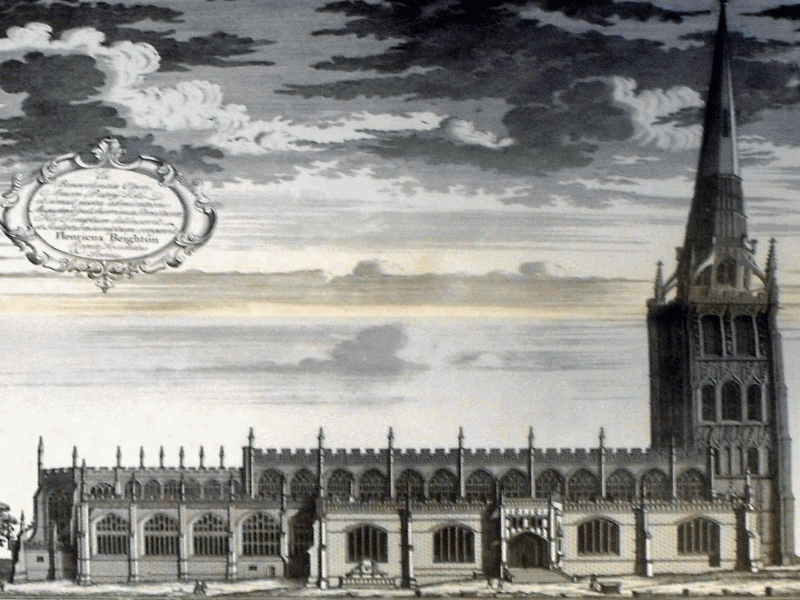Many writers on English history have been Anglican clergymen, who, like the Rector of Sutton, Rev. W.K.Riland Bedford, deplored “the corrupt condition of the Church before the Reformation”. Riland Bedford makes this remark after listing all the church appointments which Bishop Vesey had held simultaneously, a practice known as pluralism, not tolerated in the Church of England. Before the Reformation, however, it was routine for important men to hold several appointments at once, especially if they were in the service of the Crown.
“Bishops and other high-ranking clerics dominated the court of Henry VII because the leading aristocracy had proved too unreliable. By entrusting men like Fox Nix and Warham the King had been able to break the grip of baronial power” according to a recent study; Henry VII was a miserly king, and this practice saved him money, as clergymen could be rewarded for their services with promotions in the church. Vesey’s church appointments can therefore be seen as rewards for political services to the crown.
Firstly, in 1495, he was appointed Chaplain of the Chapel of St. Blaize in Sutton, said to be worth £3 per annum; he was named as John Harman, his real name, rather than Vesey, and replaced the former chaplain, also named Harman. A more lucrative preferment in 1495 was as Rector of Clifton Raynes in Buckinghamshire, the first step on the ladder to wealth and power. Rectorships of Brize Norton and Edgmond followed in 1497, the reward probably for diplomatic missions on behalf of the Crown.
By 1500 Vesey was well-established at Court, having been made Prebend of Darlington in 1498, Rector of St. Mary’s on the Hill, Chester, 1499, Archdeacon of Chester in 1499 and
Vicar-general to Bishop Arundel, 1498-1502. It appears that Vesey took his responsibilities in all these places seriously, although non-resident; however his service to Bishop Arundel of Exeter did require his frequent presence in the diocese, especially when he became the Bishop’s Chancellor there and later (1508) Precentor (responsible for the daily worship and music programme) before becoming Dean and eventually (1519) Bishop there.
Vesey’s income was increased still further in the remaining years of the reign of Henry VII - Rector of Stoke Teignhead Devon 1504, Prebendaries of Exeter 1503, and Crediton 1504, Archdeacon of Barnstaple 1503, and Vicar of St. Michaels, Coventry. In spite of his duties in the church, he must have been an important man at court, probably a member of the King’s Council by this time, a colleague not only of the King’s Chancellor, Archbishop Warham, but also of the coming man, Thomas Wolsey.
Henry VIII’s ascension to the throne in 1509 saw Vesey made Dean of Exeter, so he must have been favoured by the young king, and as Wolsey’s right-hand man three more prebendaries soon followed to swell his coffers. A key appointment as Dean of the Chapel Royal in 1514 meant that he was one of the two members of the King’s Council who accompanied the king on his royal progresses along with Thomas (Cardinal) Wolsey. He also became Dean of Wolverhampton and Rector of Meifod, Montgomeryshire.
Our multi-tasking benefactor also held high office at court during the twenty years from 1495 to 1515, so he may not have been able to devote much time to music. As Precentor at Exeter Cathedral he was responsible for the music there; his patron Henry VIII composed masses and played the organ, the lute and the virginals; the Chapel Royal, of which Vesey was Dean, “stood as one of the foremost secular liturgical choirs in Europe”, accompanying the King to the Field of the Cloth of Gold in 1520; and finally, Vesey bestowed on Sutton Coldfield Church a pair of organs. I think he must have had a fine tenor voice and played the organ.
